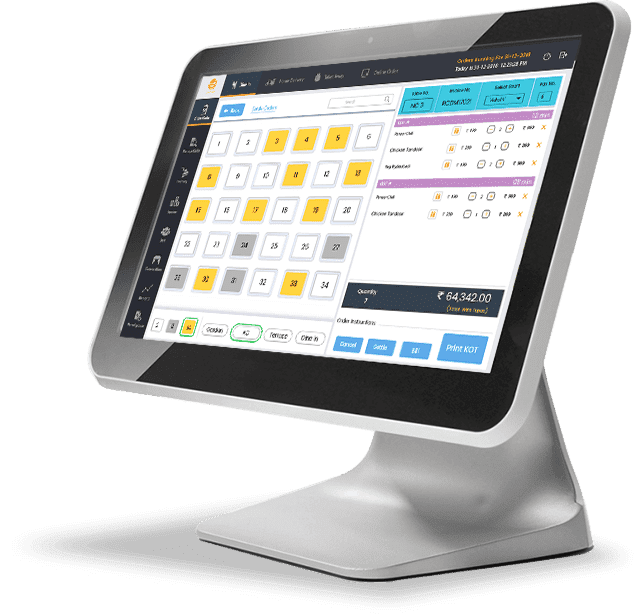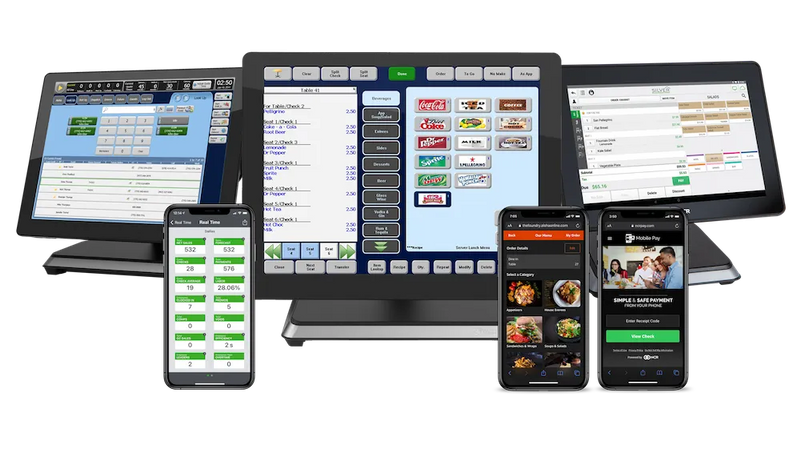Just How POS System Functions: A Comprehensive Guide for Service Owners
A POS system serves as a necessary tool for contemporary organizations, incorporating numerous components to improve procedures. It includes hardware like barcode scanners and software for sales monitoring. This system not only processes deals but additionally takes care of supply and analyzes customer behavior. Comprehending its performance can substantially influence a service's efficiency and decision-making. What are the vital aspects that add to this effectiveness? Checking out these parts offers useful insights.
Comprehending the Parts of a POS System
A Factor of Sale (POS) system is made up of numerous key parts that function with each other to help with purchases and manage service operations. At its core, the hardware consists of tools such as a sales register, barcode scanner, receipt printer, and settlement terminal, all essential for refining sales (Restaurant POS Software). The software application component takes care of supply, sales monitoring, and consumer data, giving valuable insights for organization decisions.Additionally, databases store transaction records and consumer information, making sure information stability and safety. Network connectivity makes it possible for real-time updates and accessibility to cloud-based services, boosting operational efficiency. Individual user interfaces, developed for simplicity of usage, allow staff to navigate the system swiftly, reducing training time. Together, these elements develop a natural system that enhances the sales procedure, boosts customer solution, and help in efficient administration of business sources. Comprehending these elements is important for company owner seeking to maximize their POS systems
Exactly How Sales Transactions Are Refined
When a customer chooses to make an acquisition, the sales transaction launches a series of systematic steps within the POS system. The cashier inputs the items being purchased, which are checked with a barcode visitor or manually gone into. This action obtains item details, consisting of prices and suitable taxes, from the system's database.Next, the consumer exists with the total amount due. The POS system then processes the repayment, whether through money, charge card, or mobile settlement methods. For electronic repayments, the POS securely communicates with repayment processors to license and verify the transaction.Once the repayment is validated, the system produces a receipt, which can be printed or sent electronically. This invoice acts as receipt for the client. The transaction information is taped in the system, ensuring accurate sales documents and monetary tracking for the service.
Supply Monitoring and Tracking
Efficient inventory administration and monitoring are vital elements of a POS system, as they assure that businesses maintain ideal supply degrees and lessen disparities. A durable POS system permits for real-time inventory updates, mirroring sales and returns instantaneously. This allows local business owner to check stock degrees properly, guaranteeing that preferred products are conveniently available while avoiding overstocking of much less popular products.Additionally, advanced POS systems provide attributes such as automatic stock notifies and reorder pointers, enhancing the procurement procedure. Barcoding and RFID modern technology boost accuracy in tracking stock motion, lowering human error. Comprehensive reporting devices give understandings into inventory turnover prices, aiding companies make educated decisions about acquiring and item offerings. Eventually, effective stock administration with a POS system not only enhances operational performance however likewise boosts customer contentment by making sure item accessibility.

Evaluating Client Information and Insights
Consumer information analysis acts as an effective device for businesses using a POS system. By collecting and analyzing purchase data, businesses can uncover useful insights concerning customer behavior and choices. This analysis enables them to identify acquiring trends, peak shopping times, and prominent items, therefore educating inventory choices and advertising strategies.Additionally, services can sector their client visit this site base, permitting for personalized advertising and marketing initiatives that cater to particular demographics or buying habits. Recognizing customer commitment patterns also helps in developing targeted promotions and rewards programs.The information gleaned from a POS system can likewise disclose insights right into customer comments, allowing companies to make informed choices regarding product offerings and service renovations. Eventually, leveraging consumer data properly can boost the general buying experience, foster consumer fulfillment, and drive profits growth.
Benefits of Carrying Out a POS System
Applying a you can try these out POS system supplies many benefits that can greatly enhance organization operations. To start with, it enhances deal processes, reducing delay times and improving customer complete satisfaction. By automating sales processes, companies can minimize human error and assurance accurate record-keeping. Additionally, a POS system supplies valuable data analytics, making it possible for proprietors to track sales fads and inventory levels in real-time. This insight sustains educated decision-making, assisting to maximize supply administration and marketing strategies.Moreover, numerous POS systems incorporate with various other service devices, such as accountancy software, simplifying monetary monitoring. Enhanced staff member management functions, such as tracking hours and performance, additional add to operational efficiency.Lastly, the implementation of a POS system can lead to boosted profits via enhanced client experiences and critical insights, eventually cultivating service development and sustainability.
Frequently Asked Concerns
What Kinds Of Organizations Can Gain From a POS System?

Just how much Does a POS System Typically Cost?
The expense of a POS system normally varies from a couple of hundred to several thousand bucks, relying on features, hardware, and software - Restaurant POS Software. Services need to take into consideration continuous charges for upkeep, assistance, and purchase handling when budgeting

Can I Incorporate a POS System With Existing Software?
Incorporating a POS system with existing software program is often feasible. Many systems offer APIs or built-in compatibility attributes, allowing businesses to enhance operations and improve performance by attaching different software program get redirected here applications efficiently.
What Training Is Needed for Staff to Use a POS System?
Training for staff to make use of a POS system commonly includes understanding software performances, refining transactions, taking care of inventory, and managing client interactions - Restaurant POS Software. Practical presentations and hands-on practice improve efficiency and self-confidence in operation the system successfully
What Occurs if the Web Goes Down While Making Use Of a POS System?
If the internet decreases during POS system usage, purchases may be interrupted. Numerous systems supply offline capabilities, allowing fundamental operations to continue, however full functionality, including real-time stock updates, will certainly be limited.